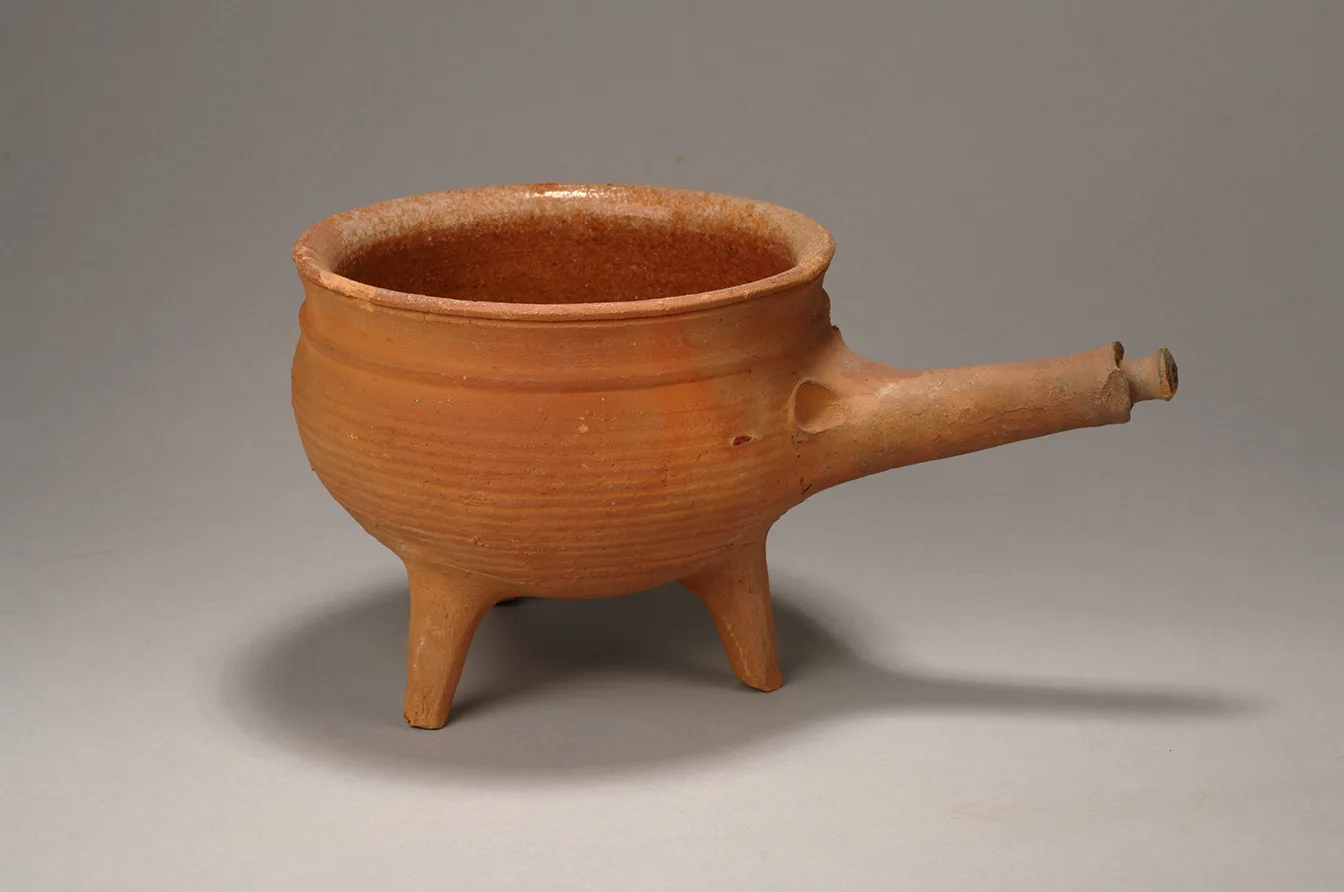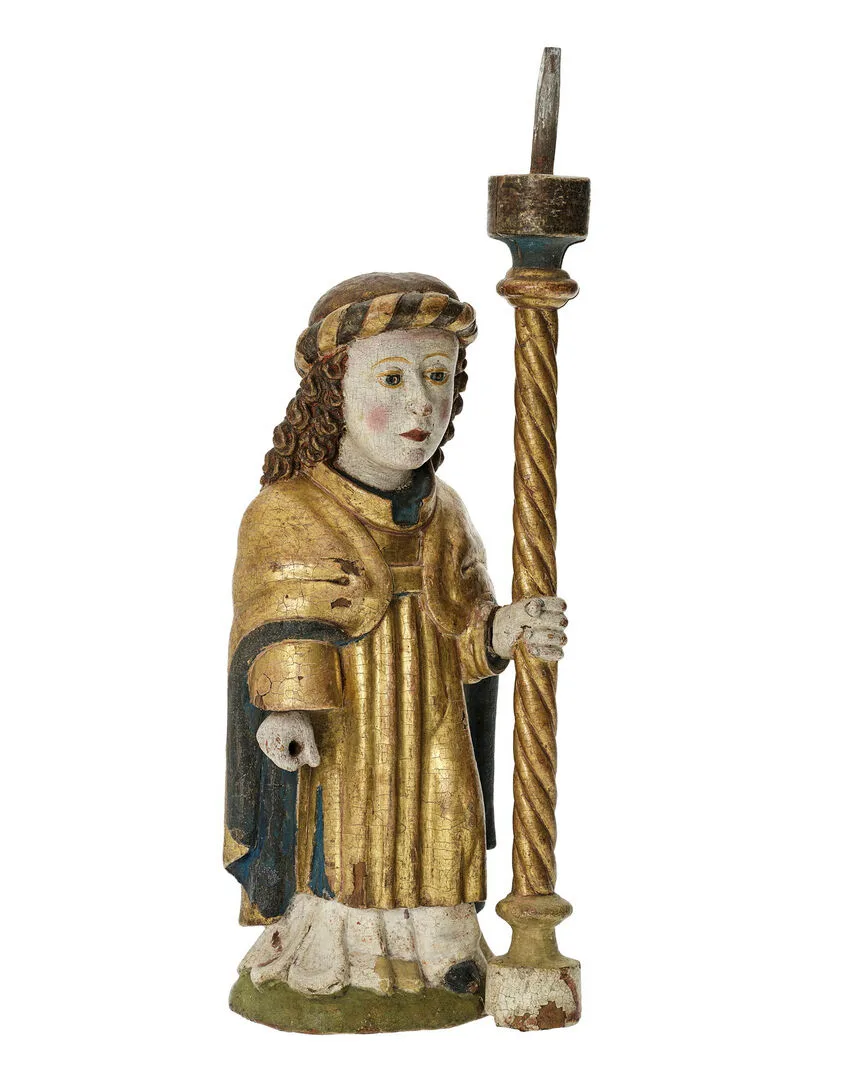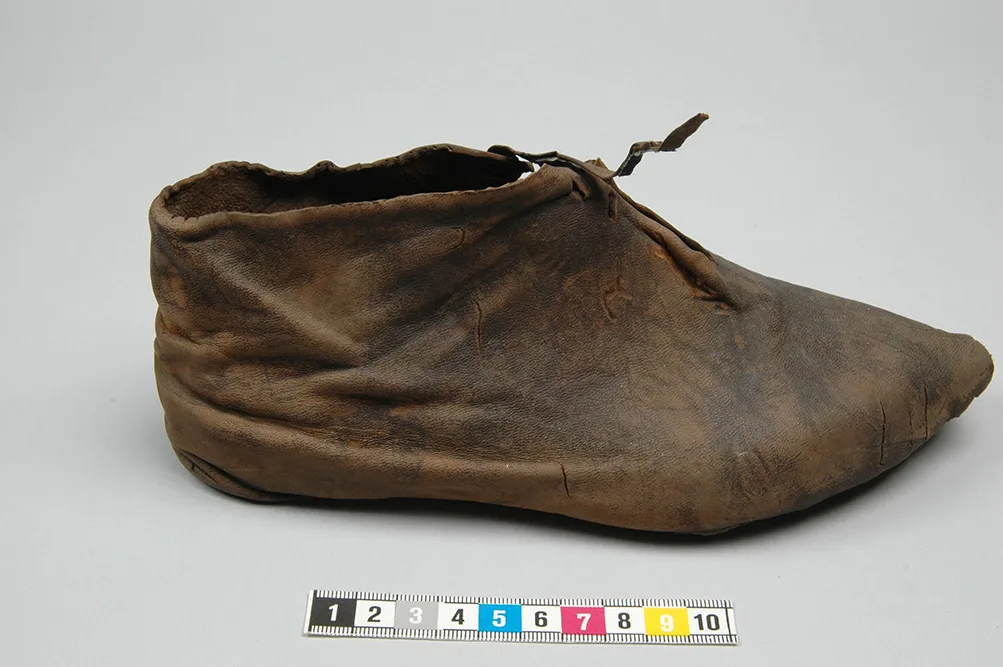The Väversunda Madonna
3D scan of a wooden sculpture of the Madonna and baby Jesus, in the collections of the Swedish History Museum (CC BY 4.0).
This wooden sculpture of the Madonna with the Christ Child on her lap comes from Väversunda Church in Östergötland. The Virgin Mary is seated on a Gothic bench with the infant Jesus in her lap. She wears a veil on her head, though the crown is now missing. The Madonna is one of the few preserved early Gothic sculptures of its kind. It is made of oak, probably in Sweden, around AD 1300–1325. She sits on a richly carved throne with Gothic architectural features typical of the period, such as pointed arches, miniature towers and small curved ornaments known as crockets.
Traces of paint remain on the sides of the throne and on Mary’s robe. Mary holds a now fragmentary rose in one hand, an ancient symbol associated with her. On her lap, the Christ Child holds an apple, a reminder of the Fall of Man and of how Mary, by giving birth to Jesus, redeems Eve’s sin. The Christ Child is carved from the same piece of wood as Mary, which is quite unusual - they were usually carved separately and joined together with a wooden peg.

Madonna and child
The original sculpture that has been 3D-scanned.
Digitisation in 3D
The Swedish History Museum is part of the government agency National Historical Museums. The organisation is constantly working to digitise its collections. One example of this work is the creation of 3D models of some of the museum’s objects.
How is a 3D model made?
A photographer takes a large number of still photos of an object from different angles. These images are then processed by computer software to create a digital version of the object – a 3D model. This technique is called photogrammetry or Structure from Motion (SfM).
In this way, 3D models of objects from the museum’s collections are continuously being created. The models are made available on the platform Sketchfab.com, where you can view, download and freely reuse them under an open licence. Have you used our 3D models to create something you’d like to share with us? Or would you like to get in touch with the department responsible for the 3D models? Feel free to email: bilder@shm.se





